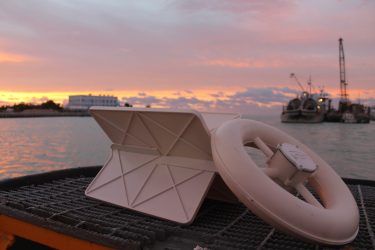
An experiment featuring the largest flotilla of sensors ever deployed in a single area provides new insights into how marine debris, or flotsam, moves on the surface of the ocean.
Conducted in the Gulf of Mexico near the site of the Deepwater Horizon oil spill, the experiment placed hundreds of drifting sensors to observe how material moves on the ocean’s surface. Rather than spread out, as current calculations would predict, many of them clumped together.
The results hold promise for the cleanup of marine pollution and have wider implications for ocean science. The open-access paper was published the week of Jan. 16 in the Proceedings of the National Academy of Sciences.
“To observe floating objects spread out over a region the size of a city concentrate into a region smaller than a football stadium was just amazing,” said first author Eric D’Asaro, a UW professor of oceanography. “We knew there would be some concentration, but the magnitude seen was quite stunning.”
Read more at UW Today »
